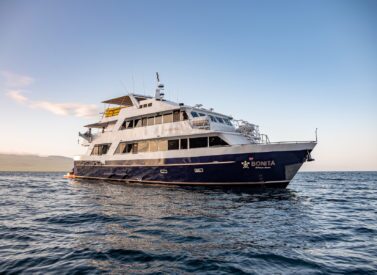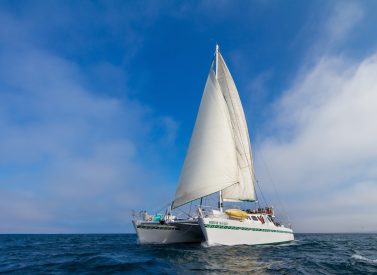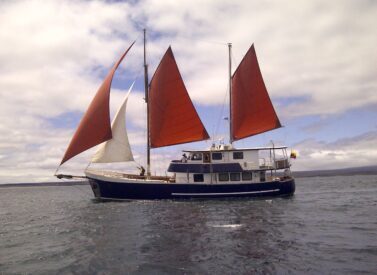
Bonita Yacht Galapagos Cruise
A first-class Galapagos Islands cruise at superior tourist class prices on the Bonita Yacht.
A Bonita Galapagos cruise is one of the best ways to visit the Galapagos Islands.
That’s because the top Galapagos tours put you and the wildlife centre stage — something the Bonita Yacht and its crew make happen.
Spacious cabins, ocean view dining rooms, and a sundeck with a superb 360-degree panorama ensure the recently renovated Bonita yacht offers a premium Galapagos Islands holiday.
Bonita Cruise, Galapagos Islands
The Bonita’s carefully-crafted five and seven-day itineraries maximise wildlife encounters on land and in the sea. There are free-to-use paddleboards and kayaks, and wetsuits are also included for everyone.
Galapagos is one of the best snorkel sites in the world, and Bonita visits the cream of the crop. These include:
Itinerary A (Western)
- Fernandina Island – Punta Espinoza
- Isabela Island – Tagus Cove
Itinerary B (Southern)
- Floreana Island – Devil’s Crown
- Kicker Rock
Itinerary C (Northern)
- Tower Island – Prince Phillip’s Steps
- Bartolome Island – Pinnacle Rock
The Bonita yacht houses up to 16 guests in nine cabins across three deck levels.
There are twin, double, and triple options, all with air conditioning, plenty of storage space, and private bathrooms that come with eco-friendly soaps and shampoos.
Enjoy sundowners on the sundeck, delight at the chef’s fusion of international and Ecuadorian food, and delve into a special Galapagos Islands experience aboard the Bonita yacht.
Trip Highlights
Print Share Download as PDF-
Don’t miss a thing: superb, action-packed 5 and 7-day itineraries
-
Spacious and comfy twin, double, or triple cabins
-
Paddleboards, kayaks, and wetsuits included
-
Top class guides deliver a first-class experience
-
Recently refurbished to the highest standard
-
Delicious food to fuel you during visits
-
First-class cruise at superior tourist price
Tom always got back to us really quickly, answered our questions clearly and gave us lost of really useful information and details. We were very impressed.
It gave us so much confidence in Andean Trails, unlike other replies we got from other agents, which were also much slower.
We decided to travel with you because of Tom’s efficiency and friendliness.
J Fairweather, UK, Legend Cruise
Full Itinerary
Itinerary A: Western Islands
Itinerary A (7 days) Sun-Sat
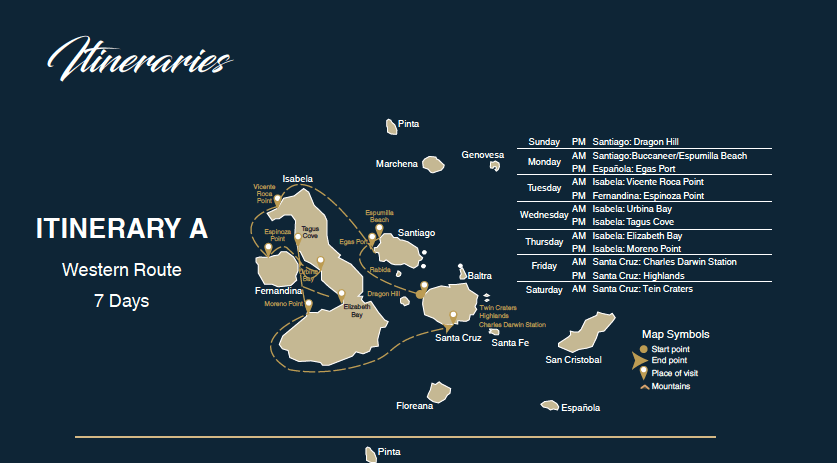
Day 1: Fly to Baltra, transfer to Bonita yacht – Santa Cruz: Dragon Hill (L,D)
After arriving at Baltra airport, you are greeted by your guide and transferred to the Bonita yacht to settle in and have lunch. The yacht sets sail and heads towards our first visit for the afternoon.
Dragon Hill
Located to the north of Santa Cruz, Dragon Hill gets its name from the land iguanas that inhabit this area. Dragon Hill is the only location on the whole island of Santa Cruz where you can see this large species of reptiles. The land iguana population recovered thanks to a successful breeding program during the 70s and 80s. There is also a small saltwater lagoon where we can often see flamingos, ducks, stilts, sandpipers and other shorebirds.
After the hike, you have the option to snorkel in some shallow, sheltered waters, where you will see large schools of surgeonfish and parrotfish. There may be reef sharks, rays, and a large diversity of tropical fish.
Trail: 1.4 miles / 2.2 km
Day 2: Santiago: Buccaneer Cove - Espumilla Beach – Egas Port (B,L,D)
This site acquired its name thanks to the pirates and buccaneers of the 17th and 18th centuries. They used the place as a hideout and somewhere to stock up on freshwater and tortoises. This scenic place features beautiful cliffs and fascinating rock formations, which you view from the zodiac.
Next, jump in the water in a sheltered bay teeming with wildlife, including large schools of fish (angelfish, puffers, parrotfish, snappers, grunts) and reef sharks, sea lions, and sea turtles.
Next is Espumilla, a beautiful long beach with rusty-brown sand located on the northern coast of Santiago. It is surrounded by large mangrove trees and native dry forest, home to Galapagos hawks and a great diversity of finches, mockingbirds and doves. Don’t forget to check the salt pan, as, during the rainy season, there could be flamingos and ducks.
Trail: 1.4 miles / 2.3 km (plus optional extra loop 0.6 miles / 1 km).
Puerto Egas
Lunch aboard the Bonita is followed by a visit to Puerto Egas. The trail follows the coastline with marine iguanas basking in the sun everywhere, alongside Galapagos sea lions, herons, oystercatchers and many shorebirds. At the trail’s end, an area called “the grottos” is home to a small colony of the endemic Galapagos fur seal, much more difficult to see at close range than its cousin.
The snorkel from the beach could reveal turtles and reef sharks, and sea lions are often present and are happy to interact.
Trail: 1.4 miles / 2.3 km
Day 3: Isabela: Vicente Roca Point – Fernandina: Espinoza Point (B,L,D)
Vicente Roca Point, surrounded by some of the tallest cliffs in the Galapagos, is a great location to observe spectacular landscapes and several volcanic features. You take a dinghy tour along the shore to get a closer view of pelicans, flightless cormorants, sea turtles, boobies, Galapagos fur seal and marine iguanas. The area is also a good location for whales and dolphins.
Later, dive into the water at a cove to look for sea turtles, penguins, sea lions, cormorants, rays and many different fish species. Peak at fan corals, sponges and other invertebrates growing on the walls, then return to the Bonita yacht for lunch.
Fernandina
In the afternoon, we head to Fernandina, the most active volcano on the islands, with regular eruptions every three to five years. This island is also one of the Galapagos’ jewels because of the large number of animals on its shores.
As soon as you disembark, you will see hundreds of marine iguanas lounging in the sun, and the tide pools are a favourite playground for sea lions. Further along, Galapagos cormorants build their nests close to the shore, not far from other species such as herons, oystercatchers and other shorebirds. Hawks often perch in the mangroves in search of prey.
Later, we’ll jump into the water to swim, with luck, among penguins, cormorants, sea lions and sea turtles. You may even see marine iguanas feeding underwater on seaweed.
Trail: 1 mile / 1.6 km
Day 4: Isabela: Urbina Bay – Tagus Cove (B,L,D)
A dramatic uplifting in the 1950s resulted in a large portion of the coast being pushed out of the water, exposing many hectares of previously submerged land. Look carefully along the trail; you will find small shells and corals. The trail passes land iguanas and, during certain seasons, giant tortoises. Galapagos Hawks nest in the area and are often seen flying or perched on the trees.
Our snorkel from the beach may feature sea turtles, cormorants and penguins, plus abundant fish. We return to the Bonita for lunch.
Short trail: 0.7 miles / 1.2 km
Long Trail: 1.8 miles / 3 km
Tagus Cove
In the afternoon, we visit Tagus Cove, one of the places Charles Darwin visited during his exploration of the Galapagos islands. A trail takes you through a dry Palo Santo forest, where you can see Darwin finches and mockingbirds. There are great views of Darwin’s lake and the large volcanos of northern Isabela.
A boat tour along the shore gives you chances to see penguins, cormorants, marine iguanas and a unique species: the Galapagos martin, a small endemic bird and one of the most endangered species on the island.
The snorkel in the nutrient-rich waters of Tagus Cove is terrific. Sea turtles and penguins may join us, as well as cormorants fishing in the reef.
Trail: 1.6 miles / 2.6 km
Day 5: Isabela: Elizabeth Bay – Moreno Point (B,L,D)
Elizabeth Bay is a beautiful sheltered bay surrounded by extensive mangroves and barren lava fields. A dinghy tour explores Elizabeth Bay’s many channels, its pools and coves brimming with life.
This is one of the best places in the Galapagos Islands to see Galapagos penguins. Don’t expect to see thousands of them; the entire population of the islands numbers around 3,000. Flightless cormorants also nest in the area. Blue-footed boobies and pelicans often fish in these shallow and rich waters, also home to abundant numbers of rays and sea turtles. We enjoy lunch aboard the Bonita.
Moreno Point
Moreno Point may look lifeless, but this is a magical place with extensive lava fields. Inland, scattered brackish lagoons form an oasis for life with flamingoes, gallinules, ducks and herons. Along the shore, look for penguins, marine iguanas, flightless cormorants, blue-footed boobies, sea lions, oystercatchers and other shore birds.
This morning’s snorkel may feature guest appearances from sea turtles, cormorants and many fish species. Look carefully in the long seaweeds; you might even find a sea horse.
Trail: 1 mile / 1.6 km
Day 6: Santa Cruz: Charles Darwin Station – Highlands (B,L,D)
The Charles Darwin Station is a non-profit organization that has been working for decades with the Galapagos National Park to preserve the biodiversity of these unique islands.
During this visit, learn about the projects both institutions perform together to protect the native species and eradicate the invasive ones threatening the Galapagos’ delicate environment. The giant tortoise captivity programme is fascinating, and the station is home to several endemic Darwin finches, as well as flycatchers and mockingbirds.
Trail: 1.2 miles / 2 km
Highlands
After lunch aboard the boat, you take a bus to the highlands of Santa Cruz to visit the lush highland forests where you look for Galapagos Giant tortoises in their natural environment. This is the best place in the Galapagos to see these gentle giants (reaching over 300 kg / 600 pounds!) casually grazing and resting in freshwater ponds. There are different birds to see here and several species of water birds, with a chance to visit a lava tunnel, too (the guide has the final say).
Return to the Bonita Yacht for a celebratory final dinner aboard.
Trail: 0.6-0.9 miles / 1-1.5 km
Day 7: Santa Cruz: Twin Craters, transfer to airport for flight out, tour ends (B)
The Twin Craters, also known as Los Gemelos, are located in the Highlands of Santa Cruz Island, en route to the airport. They are not actual craters but were created by the collapse of surface material in underground fissures and chambers. They offer beautiful views and the chance to see the short-eared owl.
Lastly, transfer to the airport to take your flight back to continental Ecuador.
Itinerary B: Southern Islands
Itinerary B (5 days) Sat-Wed
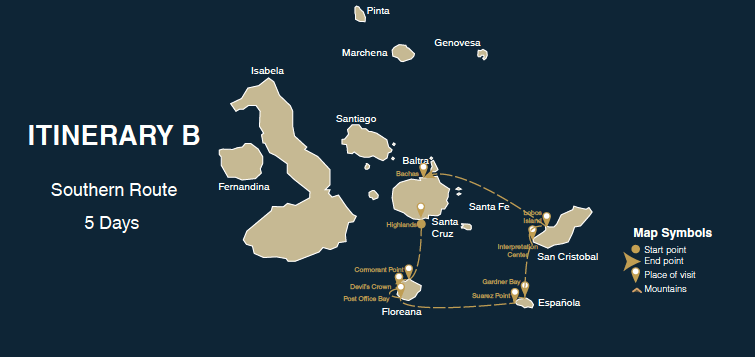
Day 1: Fly to Baltra, transfer to Bonita yacht – Santa Cruz: Highlands (L,D)
After arriving at Baltra airport, you are greeted by your guide and transferred to the Bonita Yacht to settle in and have lunch.
Take a bus to the highlands of Santa Cruz to visit the lush highland forests where you look for Galapagos Giant tortoises in their natural environment. This is the best place in the Galapagos to see these gentle giants (reaching over 300 kg / 600 pounds!) casually grazing and resting in freshwater ponds. There are different birds to see here and several species of water birds, with a chance to visit a lava tunnel, too (the guide has the final say).
We head to the boat and set sail, heading due south.
Trail: 0.6-0.9 miles / 1-1.5 km
Day 2: Floreana: Cormorant Point – Devil’s Crown – Post Office Bay (B,L,D)
Awake in the far south of the Galapagos archipelago. The first visit is to Punta Cormorant, located in the north of Floreana, known for its sizeable coastal lagoon with American flamingoes, white-cheeked pintails, black-necked stilts and other shorebirds.
A beautiful white sand beach is an important nesting ground for green sea turtles, and we can also see rays and reef sharks. Blue-footed boobies have started to breed right by the trail in recent years. This is also a great trail to look for endemic plants.
Today’s snorkel is one of the best in Galapagos: Devil’s Crown, a heavily eroded little volcano next to Floreana island. A sea current funnels plankton through the Crown, attracting huge schools of snapper, creole fish, parrot fish, angelfish, reef sharks, sea turtles, rays and a phenomenal amount of marine life. That same current will help you drift past fantastic wildlife. Return to the Bonita Yacht for lunch.
Trail: 1 mile / 1.6 km
Floreana
Floreana is famous for the tales of German settlers and the baroness during the late 1920s and 30s. Assassinations, disappearances and other unsolved mysteries are the ingredients of this fascinating story. Your guide will reveal all.
The next stop is Post Office Bay, which was often used by whalers to anchor their ships and head to the highlands to get fresh water and tortoises. Most boats visiting the Galapagos came to this place sooner or later, so a mail system was established more than 200 years ago: a barrel near the beach became the way to leave messages to other ships and the outside world. This mail system is still in use and will allow you to send postcards from the Galapagos to the outside world.
Snorkel from the beach, hoping to see sea turtles, rays, a great diversity of fish, and, if you are lucky, Galapagos penguins.
Trail: 0.4 miles / 0.7 km
Day 3: Española: Suarez Point – Gardner Bay – Osborn Islet (B,L,D)
After breakfast, the rocky trail that awaits is one of the most enjoyable nature walks in the Galapagos Islands. From the moment you set foot on Española island, the amount and diversity of fauna are breathtaking.
Sea lions and marine iguanas will be the first welcoming party, followed by large colonies of sea birds, including Nazca and Blue-footed boobies, gulls and tropicbirds. At the end of the trail is a colony of waved albatross (April to January), the largest bird on the islands and one with an elaborate courtship. Waved albatross only nest at Española, so this is the only place you can see them up close.
Trail: 1.1 miles / 1.7 km
Gardner Beach
Following lunch aboard the Bonita, the next stop is Gardner Beach, undoubtedly one of the most beautiful and exciting beaches to visit in the Galapagos. Its fine coral sand and turquoise waters give it a totally tropical appearance, which contrasts with the presence of sea lions basking on the beach.
After walking along the beach, it’s time to snorkel. It is a fantastic site to swim with sea lions, reef sharks, rays and many species of fish, including; angelfish, parrotfish, damselfish, surgeonfish and many others.
Trail: 0.5 miles / 0.8 km
Day 4: San Cristobal: Interpretation Centre – Kicker Rock – Lobos Island (B,L,D)
Located in the outskirts of San Cristobal Island’s capital, and indeed the Galapagos Islands’ capital, is Puerto Baquerizo. We visit the capital’s Interpretation Centre, dedicated to the history of human presence in the Galapagos.
From the times of the early Spanish explorers to the present, this permanent exhibition will take you through the dangers and struggles of the first settlers trying to survive the harsh Galapagos environment.
Kicker Rock/Los Lobos
After lunch aboard the Bonita, another snorkel highlight (hopefully) awaits — Kicker Rock. Rising up vertically more than 140m / 460 ft above the sea, Kicker Rock is an imposing volcanic formation a couple of miles off the coast of San Cristobal.
Its vertical cliffs are a breeding ground for boobies and tropicbirds. The slopes on the northern side host breeding colonies of frigatebirds. No landing is allowed, but a circumnavigation will give spectacular views of the rock while you look for birds from the sundeck.
Depending on the itinerary, time, and conditions, we snorkel at Kicker Rick, swimming between the giant rocks. Below, look for sharks, sea turtles, rays and many different species of fish and invertebrates growing on the vertical walls.
Next is Lobos Island, a small islet separated from San Cristobal by a narrow channel, forming a sheltered bay where sea lion pups play in tidal pools. Groups of sea lions welcome you at the landing spot. As you walk a few steps inland, male frigatebirds displaying their inflated red balloons are perched on the bushes and trees. A small colony of blue-footed boobies, which often nest right on the trail, will allow you to observe their famous courtship dance.
The water is usually calm here, making it a great snorkelling spot. Sea lions often play with divers to show off their swimming skills, while sea turtles and rays are often seen resting on the sandy bottoms.
Trail: 0.4 miles / 0.6 km
Day 5: Santa Cruz: Bachas, transfer to airport for flight out, tour ends (B)
Bachas gets its name from the remains of two large barges — mispronounced by locals as “bachas” — left by the Americans during World War Two. At low tide, you can still see the iron skeletons of the barges buried in the white sand.
From November to May, this place is also one of the most critical sea turtle nesting grounds in the Galapagos Islands. There are also several small saltwater lagoons where we often see flamingos, herons and other aquatic birds.
After the walk, there is the option to swim or snorkel from the beach. The area is rich in some of the most common fish species of the Galapagos, but you can also find white-tipped reef sharks and rays.
Trail: 1 miles / 1.6 km
Lastly, transfer to the airport to take your flight back to continental Ecuador.
Bonita Itinerary C
Itinerary C: Northern Islands
Itinerary C (5 days) Wed-Sun.
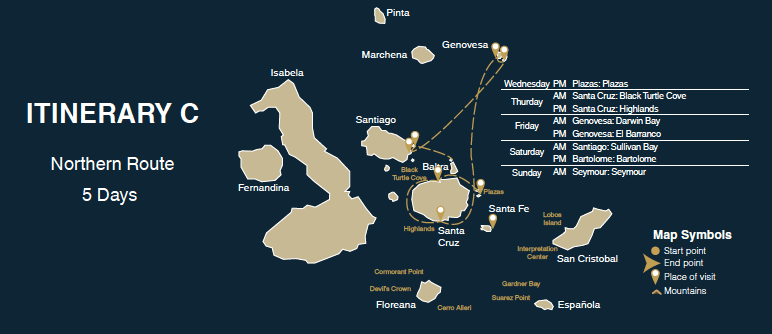
Day 1: Fly to Baltra, transfer to yacht. PM — Plazas (L,D)
After arriving at Baltra airport, you are greeted by your guide and transferred to the Bonita Yacht to settle in and have lunch. The yacht sets sail and heads towards our first visit for the afternoon, Plazas.
Only South Plazas allows visitors; North Plazas is kept exclusively for scientific research. This is a small islet, but it packs an impressive amount of wildlife. After you land, you will see Galapagos land iguanas waiting under prickly-pear cactus feeding on their fruits.
A large colony of sea lions allows one to see playful pups enjoying the tide pools and large grumpy males defending their territories. The trail takes you to a cliff where you can observe many sea birds, such as frigatebirds, red-billed tropicbirds, boobies, swallow-tailed gulls and pelicans. Reddish succulent vegetation with scattered cactus covers most of the island like a carpet, giving this island a unique personality.
Trail: 0.8 miles / 1.4 km
Day 2: Santa Cruz: Black Turtle Cove - Highlands (B,L,D)
Black Turtle Cove gets its name from the abundance of green sea turtles, locally known as: “tortugas negras.” There is no landing here, so we tour in zodiacs, exploring shallow channels and small coves surrounded by beautiful mangrove forests.
Reef sharks, sea turtles and several species of rays inhabit this beautiful area, which is considered a vital mating area for turtles and a nursery for several species of sharks. Herons, pelicans and boobies are also common here as they prey on schools of anchovies.
Highlands
After lunch aboard the Bonita, we take a bus to the Highlands and the lush highland forests, where you look for Galapagos Giant tortoises in their natural environment. This is the best place in the Galapagos to see these gentle giants (reaching over 300 kg / 600 pounds!) casually grazing and resting in freshwater ponds. There are different birds to see here and several species of water birds, with a chance to visit a lava tunnel, too (the guide has the final say).
Trail: 0.6-0.9 miles / 1-1.5 km
Return to the yacht for dinner and to set sail for the north.
Day 3: Genovesa: Darwin Bay – El Barranco (B,L,D)
Far to the north of the archipelago, Genovesa is a favourite island for birdwatchers.
From the minute you set foot at the beach, you will be amazed by the noise of hundreds of boobies, gulls and frigatebirds flying over your heads, perched in the bushes or nesting on the sandy terrain.
The trail is an ultimate wildlife experience as there are animals everywhere. Sea lions and marine iguanas near the sea; night herons, lava & swallow-tailed gulls, Darwin finches, Galapagos doves, mockingbirds and many more species inland.
From the bay, you snorkel along the cliffs, in deep waters, or in shallow waters from the beach. In either case, there are many fish and excellent chances of seeing sharks, rays and sea lions. Return to the Bonita for lunch.
Trail: 0.7 miles / 1.2 km
El Barranco
In the afternoon, the visit is at El Barranco, located in the southern part of Darwin Bay on Genovesa Island. The cliffs facing the sea are made of fragile fractured lava, making it the ideal place for storm petrel to build their colonies. In turn, this attracts short-eared owls, who prey on the nesting birds.
Red-footed and Nazca boobies are abundant along the trail. At the base of the cliffs, you can see Galapagos fur seals resting in shaded areas and several species of seabirds. There’s the chance to snorkel along the cliffs with sharks, rays and sea lions.
Trail: 0.7 miles / 1.2 km
Day 4: Santiago: Sullivan Bay - Bartolome: Bartolome (B,L,D)
This hike is a journey into understanding the birth of these volcanic islands. You walk in a well-preserved flow of Pahoehoe lava, giving you endless opportunities to see the delicate textures of these lavas that only appear in a few places worldwide.
At first sight, the barren landscape looks deprived of life, but look carefully for pioneer plants, lava lizards and small birds. By the shore, you can find penguins, pelicans and oystercatchers.
Snorkel from a coral sand beach or from the dinghies. The lifeless lava above contrasts entirely with the underwater world. There are large schools of fish, Galapagos penguins, reef sharks, turtles and rays.
Trail: 1.4 miles / 2.2 km
Bartolome
After lunch on the Bonita yacht, the next visit is Bartolome, one of the Galapagos’ iconic sites. Pinnacle Rock looms over a beautiful peach-colour sand beach, and we hike to the island’s highest point for a great view. You can see many Galapagos Islands from this vantage point.
This area is renowned as one of the best snorkel spots in the Galapagos Islands. The water is calm and crystal clear, penguins shoot around, and there is an incredible diversity of fish, colourful invertebrates, sea lions, turtles, rays and reef sharks.
Trail: 0.9 miles / 1.5km
Day 5: Seymour, transfer to airport for flight out, tour ends (B)
The final visit is to Seymour, an island home to large colonies of magnificent and great frigatebirds. Blue-footed boobies nest in the ground and perform their famous dance in the open areas while swallow-tailed gulls perch on the cliff edges.
Land iguanas are common inland while their marine cousins bask in the rocks by the sea, close to sea lions, which often like to body surf in the waves.
There’s one last chance to snorkel, with a tremendous number of fish, sea lions, sharks, eels, turtles, rays and much more.
Trail: 0.8 miles / 1.4 km
Lastly, transfer to the airport to take your flight back to continental Ecuador.
Prices From $2,700 / £2,195 per person
What's Included?
Accommodation in single, double or triple cabin, bilingual naturalist guide (English-Spanish), all meals from lunch on first day to breakfast on departure day, snacks after activities, welcome cocktail, free purified water, tea, and coffee, visit as per itinerary, shared transfers airport-yacht-airport, snorkelling gear (mask, tube, and fins), use of kayaks and paddle boards in authorized zones, wetsuits, eco-friendly shampoo, hair conditioner, and soap in cabins, room towels.
What's Not Included?
International flights, Round trip flights to the Galapagos Islands, Galapagos National Park fee, Galapagos Ingala fee, soft and alcoholic drinks, personal items, souvenirs, tips, travel insurance, personal items, Ecuador services
Accommodation
The Bonita yacht has a total of nine cabins split over three decks, with double, twin, and triple cabin options.
All have private, en suite bathrooms with eco-friendly shampoo and soap, air conditioning, room towels, safety deposit box, telephone for internal communication.
Upper deck (4 cabins): Twin or double matrimonial (convertible beds), panoramic windows (10m2)
Main deck (2 cabins): Twin or double matrimonial (convertible beds), panoramic windows, (10m2)
Lower deck (2 cabins): Triple or twins, 1 x single bed + bunk beds, porthole (9-10 m2):
The Bonita also counts a dining room with ocean view windows, and a living room with panoramic windows, books, boardgames, and a multimedia library.
The bar is well stocked with international and loccal wines, spirits, beers, and soft drinks, and your bartender mixes special cocktails, too.
The sundeck has comfortable loungers, lookout points and observation areas — you never know what you might see!
Tour Staff
The crews are “Galapagueños”, guides, captains and crew members were born and raised in the Galapagos Islands.
The Naturalist, English-speaking guides have studied and been trained at Charles Darwin Scientific Station, and have long years of experience guiding at the Galapagos Islands.
Without doubt your on-board naturalist guide is the crucial pivot for your experience in the Galapagos. Bonita guides use their extensive experience to lead the excursions, to search and identify species and point out interesting details; besides taking care of your safety and compliance of indispensable conservation rules.
Above all our guides share their knowledge, love and respect for the Galapagos’ stunning ecosystem. Their explanations (in English and Spanish) and fascinating stories about animal behaviour, intriguing ecosystems and survival strategies can bring nature even more to life; not only in the field, but also during lectures or daily briefings aboard.
There will be a total of 9 crew aboard the Bonita looking after your needs in Galapagos.
Meals
A professional cook and kitchen staff will treat you to a substantial breakfast, and mouth-watering warm lunches and dinners, all served in abundant buffet style.
All departure include vegan and vegetarian options, and Kosher food can be supplied under previous request at extra cost.
There is varied menu of local and international dishes with a choice of two meals at lunch and dinner. Breakfast is buffet style. Food is healthy and delicious and snacks and juices are served in-between meals.
Activity Level
Walks
Every visit to each island involves an easy or moderate walk, which can last between 2 to 3 hours, and are not considered strenuous. On these walks you will be led by an expert naturalist guides in a small group along clearly marked trails. They will explain in great detail all the wonders of each of our carefully selected itineraries. Most days there are two guided walks on a specific island where you will be able to walk and hike on beaches, lava fields, alongside cliffs and around mangrove estuaries.
Snorkelling
Snorkelling in the Islands is the highlight of the Galapagos cruise for many of our guests. You have the opportunity to go snorkelling almost every day – snorkelling with marine iguanas and with playful sea-lions are some of the highlights, as well as with green sea turtles, penguins and an incredible variety of colourful reef fish. On the western islands the water is a little colder but teaming with life. There are beach snorkels for beginners and deeper waters.
Zodiac rides
Dinghies, or “Pangas” as they are known in Galapagos, are inflatable zodiacs that serve as the main transportation method from our Galapagos yachts to the visitor sites. At several times during your week-long Galapagos travel adventure, you will have the chance to enjoy dinghy (or panga) rides in shores, mangrove estuaries, coves and caves.
Practical Information
Is this the cruise for me?
The Bonita Yacht is a recently refurbished superior tourist boat with first-class finishes.
Its twin, triple, and double cabins make it ideal for couples, honeymooners, families, and individual travellers. There is plenty of cabin and communal space, too.
The short five and seven-day itineraries are perfect for peope who want a full Galapagos experience but are a little short on time.
Introduction to Galapagos
These magical islands comprise of 50 volcanic islands of varying shapes and sizes, which lie 1,000 kilometres off the coast of Ecuador.
Here, unlike anywhere else on Earth, you can enjoy a thousand close encounters with a weird and wonderful variety of ‘friendly locals’, including giant tortoises, fur seals, sea iguanas, frigate birds and blue-footed boobies.
Read our Galapagos Islands Guide and more about diving.
In 1535, Tomás de Berlanga, Bishop of Panama, floated into this archipelago and named it Galapagos after the giant tortoises he encountered. Pirates used the islands for refuge and to bury their stolen treasure after that.
The islands’ most celebrated visitor was Charles Darwin, who arrived aboard the HMS Beagle in 1835. The rare life forms he encountered helped him formulate his theory of evolution, which he published in The Origin of Species by Means of Natural Selection.
It wasn’t until 1959 when it became part of Ecuador’s national park system that this fragile ecosystem with its rare and endemic species came under protection.
In 1979 the Galapagos archipelago was declared a UNESCO World Heritage Site.
Weather in Galapagos
When to visit Galapagos Islands: weather and wildlife
There is no real ‘best’ time to visit Galapagos on holiday as there is always wonderful wildlife and weather to enjoy. Read our blog for more.
Most animals – tortoises, sharks, sea lions and boobies – are found year round and many of the species here are non-migratory.
The Galapagos Islands are located right on the equator so air and water temperatures do not vary by much.
Having said that, there are two recognised seasons, and each months brings natural marvels for the visitor to enjoy.
Below is our quick guide to the weather and wildlife you can find on the Galapagos Islands.
General weather information
The warm season (Jan-Jun)
- Calm, clear warm waters, great for snorkelling, often without a wetsuit.
- Great weather, with February and March being the hottest and sunniest months with blue skies and sunshine.
- Occasional heavy bursts of rain in the afternoons.
Sea temperatures: 22-25°C / 72-77°F
Land temperatures: 21-32°C / 72-90°F
The dry ‘garua’ season (Jun-Dec)
- It’s a great time for marine life in the cooler seas. Snorkellers may want a wetsuit.
- August and September the coolest when you may need a jacket in the evenings and the sea can be choppy.
- There can be mist on the islands in the mornings (garua) which usually burns off by midday leaving overcast skies or a sunny afternoon.
Sea temperatures: 15-22°C / 60-72°F
Land temperatures: 18-24°C / 65-75°F

Air and sea temperatures in Galapagos, month-by-month
Galapagos cruise kit list
Good kit is vital for every trip.
Book with Andean Trails and get 15% off Páramo’s fantastic ethical and high performance outdoor gear.
Galapagos – general advice
Galapagos is warm and humid, and you will need t-shirts (moisture wick-away or breathable t-shirts can be very useful, it can get very hot in the day), shorts, lightweight skirt or trousers and bathing suits.
One or two cotton shirts can be used to protect you from sunburn, especially when snorkelling (not very elegant worn in the water over a swimsuit, but practical – and Galapagos is NOT an elegant place!).
You may want to change into different clothes for the evening, but don’t take anything dressy or smart – there really is a very relaxed atmosphere on board.
Pack something warm for going on deck in the early morning or evening a fleece, maybe, and a sweatshirt – and a waterproof for the Highlands.
Strong sandals, trainers, or light hiking boots are ideal footwear – you may like to have something suitable for easy walks and another for tougher terrain – your guide will advise you daily what the walking will be like. Most boats ask passengers not to wear heavy shoes on board.
Do take a hat!
Seasickness tablets if you think you will have problems – i.e. Sturgeon, or Mareol if you buy them in Quito. The sea can be choppy, so it is recommended to take them as a precaution.
Galapagos – detailed kit list
- First aid kit – aspirin, imodium, sun tan lotion (facter 50 recommended), sunburn cream, lip salve, throat lozenges, insect repellent, etc.
- Earplugs – the engine can be noisy, whatever the boat, wherever your cabin.
- Sun glasses and sun hat.
- Snorkelling equipment – the boat either provides kit for free or has a supply for hire, but it may suit you better to take equipment in your size that you know will fit you. Even if you have not snorkelled before, DO have a go – under water Galapagos is a very special experience. Try it first of all from the beach, to get the hang of breathing through gritted teeth, then take the plunge!
- Towel, for the beach (most boats provide these, please ask).
- Money belt.
- Passport, with at least 6 months remaining from date of return from Ecuador.
- US Dollars cash and mixed denomination notes, undamaged and unmarked.
- Visa/MasterCard, Cash card.
- Personal & Medical insurance.
- Camera and film / memory cards (take at least twice the amount you think you will need!). You may want to take an underwater camera for snorkelling.
- Camera charger
- Binoculars
- Small backpack – to keep your sun cream, water, shirt etc in when you are on shore.
- Small plastic water bottle, 1-2 litres, depending on how much you drink.
- Biodegradable sunblock (v. high factor, 50+ recommended) and lip salve.
- Toiletries (featuring biodegradable soap).
- Wet Wipes/antiseptic hand wash cream
- Travel alarm clock.
- Sewing kit.
- Spanish/English phrasebook.
- Book, e-book, mp3 player/ipod or other for free time.
The Galapagos Islands are a very fragile environment and the arrival of more and more inhabitants to the islands, as well as tourist have an impact.
Please try to minimise your impact by:
- Bringing a water bottle to refill, rather than using a new bottle each time.
- Recycling your rubbish where possible, not leaving any rubbish behind.
- Taking batteries back home with you – they cannot be recycled properly in Ecuador.
- Saving water where possible.
- Leave toiletries that contain microbeads at home
- Saving energy by switching your lights off when you leave the room. Electricity on the islands comes from a generator, fuelled by petrol. For this same reason, please think about whether you really need to use your air conditioning.
Quito
Pleasantly warm during the day, but can be quite chilly during the morning or at night when you might want a jacket or a fleece, plus a waterproof.
You may want to dress up a little more in the evening here, depending on where you are staying, and what sort of restaurant you like.
Guayaquil
Conditions here are similar to Galapagos – hot and humid. T-shirts and shorts in the day, and like Quito, something smarter for eating out in restaurants at night.
ATOL holiday protection
Andean Trails has 25 years of experience of putting together the best South America holidays.
We pay a fee to the CAA for every licensable passenger we book since we hold an Air Travel Organiser’s Licence granted by the Civil Aviation Authority. In the unlikely event of our insolvency, the CAA will ensure that you are not stranded abroad and will arrange to refund any money you have paid to us for an advance booking.
We also offer ATOL (Civil Aviation Authority) protected holidays to give our customers peace of mind when booking and travelling.
When you buy an ATOL protected air holiday package from Andean Trails Ltd you will receive a Confirmation Invoice from us confirming your arrangements and your protection under our Air Travel Organiser’s Licence number 6275.
You can read more about ATOL, who is covered and what protections you have if not ATOL-covered, on our ATOL page.
What is ATOL?
The CAA’s ATOL scheme offers protection to your money and your holiday if you book with us. Not everybody is covered (see ‘Who is covered?’ for more), as you must purchase an ‘air package holiday’ with Andean Trails to be protected.
And ‘air package holiday’ is defined as including a flight and some ground services (hotel, transfer, trek etc). This is also known as an ‘ATOL-protected holiday’.
Who is covered?
To be covered by ATOL, you must book a flight and some ground services with us and be from the UK. If you are from the UK and only book ground services and no flights, you are not covered by ATOL (see below for more on how non-ATOL clients are covered).
If you are outside the UK and buy flights with us, you will be ATOL protected IF any of the flights booked with Andean Trails touches/stops in the UK at any point during your holiday package booked with us.
If you buy your flights elsewhere, please check with that agent if you are ATOL protected. Be careful with online flight purchases and make sure you know what protection you have, if any, before paying for flights.
Not all holiday or travel services offered and sold by us will be protected by the ATOL scheme. Please ask us to confirm what protection may apply to your booking.
For land only holidays not involving any air travel, in accordance with “The Package Travel, Package Holidays and Package Tours Regulations 1992”, all UK passengers booking with Andean Trails Ltd. are fully protected for the initial deposit and subsequently the balance of all money paid to us, arising from cancellation or curtailment of travel arrangements due to the insolvency of Andean Trails.
I’m not ATOL covered, what protection do I have?
If you are not ATOL covered, any payments you make to us go to a Trust account.
We can only access this money once your tour has been completed, meaning that if anything happens to Andean Trails Limited while you are on holiday, then your money is secure and you can either complete the trip or be able to make it home.
If you pay for your holiday with a credit card, some offer payment protection – please check with your cardholder.
You also should have cancellation protection written into your insurance (which we recommend you have at the time of booking) in case you need to cancel.
Floreana, Galapagos
Floreana is the least populated Galapagos island and yet home to its most scandalous tales!
Gossip aside, it is home to Post Office Bay, where a post barrel was erected in the late 18th century by English whalers. Passing sailors took the messages onwards – and it still functions today.
The nearby Devil’s Crown is one of Galapagos’ most special snorkels.
A (at times strong) current pushes you past the remains of a submerged volcano with its crater ‘horns’ still exposed, and you’ll see a brilliant array of colourful fish and corals.
Great viewpoints at Asilo de La Paz and Baroness view, too.
Isabela, Galapagos
Isabela is the largest and one of the youngest Galapagos islands, and its small human but enormous wildlife population make it perfect for cruises and hotel-based visits.
It also has a mile-long, pristine white-sand beach, with some small and cool bars to hang out in with some sundowners.
Must-do’s include Sierra Negra volcano and its active caldera, head to Los Tuneles to snorkel face-to-face with sharks and turtles and spend some time looking for penguins at Las Tintoreras.
Isabela is great for adventure and families alike.
For cruises only, Punta Vicente Roca is a lovely snorkel, and Urbina Bay is a top spot for wild giant tortoises and colourful land iguanas.
Kicker Rock, Galapagos
A truly impressive sight, Kicker Rock is the remains of an underwater volcano rising vertically 150m/492ft out of the sea.
The exposed cone has fractured in two, leaving a wildlife rich sea channel for us to enjoy, snorkelling or diving.
Jump in the water and drift with the gentle current through the cleft, keeping an eye out below for sea turtles, manta rays and maybe the odd harmless Galapagos shark, just to name a few.
Hammerheads are occasionally seen here too.
On the cliffs, we can spot Blue-footed Boobies, Nazca Boobies and magnificent Frigate birds. A memorable snorkel.
Santa Cruz, Galapagos
Almost everyone will visit Santa Cruz during a Galapagos stay.
It’s popular because of the incredible variety of habitat and animals go alongside its strategic location.
The famous Charles Darwin Centre is a must, as is a visit to see Giant Tortoises and a kayak in the turquoise waters at Garrapatero beach.
There are a plethora of great dive and snorkel sites nearby, lively bars and some good beaches for relaxing, like Tortuga Bay.
Most cruises start or end here, and the majority of flights come to Santa Cruz, plus there are many accommodation options, from basic to luxury.
Santiago (James), Galapagos
Curious, dark sand greets the visitor to this centrally-located island.
Marine iguanas may join you for a snorkel after warming up in the sun, along with white-tipped reef sharks, rays, surgeon and parrotfish and turtles.
Crabs, sea lions and spectacular blowholes line the shore.
On the other side of the island, red sand cliffs are home to many seabirds, and Bucaneer cove tells its own whaling and pirate history.
A group of nearby small rocky islands called Bainbridge Rocks feature a stunning, turquoise saltwater lagoon that is home to flamingos.
The Galapagos Islands
The Galapagos is an ideal year-round destination, with its volcanic landscapes and tame wildlife.
Whether you cruise or stay in a hotel, you are guaranteed to see giant tortoises, sea lions, iguanas and blue-footed boobies to name a few, plus amazing volcanic formations and stunning beaches.
No trip here is complete without diving or snorkelling – turtles, rays, schools of fish, and for the lucky, hammerhead and whale sharks.
Divers can enjoy some of the best underwater diving in the world on liveaboard cruises to remote and spectacular dive sites.
Tower (Genovesa), Galapagos
Flung way out to the north of the archipelago, this spectacular island is a Galapagos in miniature.
Its remote location meaning very few people make it this far.
Sea lions, sharks and Flightless Cormorants will no doubt accompany you on snorkels in deep waters as well as close to the beautiful, white-sand bay.
A multitude of birds nest at Tower, and it’s the only place you’re sure to see the Red-Footed Booby, as well as the chance to spot petrels, owls, gulls and more.
Prices From $2,700 / £2,195 per person
2025 prices, shared cabin, 5 days
7 days / 6 nights: USD 4,000pp
Longer cruises available
Single supplement: +50%
Children aged 6-11 years -10% discount
Christmas and New Year: +50% surcharge
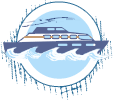
Dates & Prices
Prices From $2,700 / £2,195 per person
2025 prices, shared cabin, 5 days
7 days / 6 nights: USD 4,000pp
Longer cruises available
Single supplement: +50%
Children aged 6-11 years -10% discount
Christmas and New Year: +50% surcharge
Can’t find what you’re looking for? Get in Touch
+44 (0)131 378 5593
+44 (0)131 554 6025



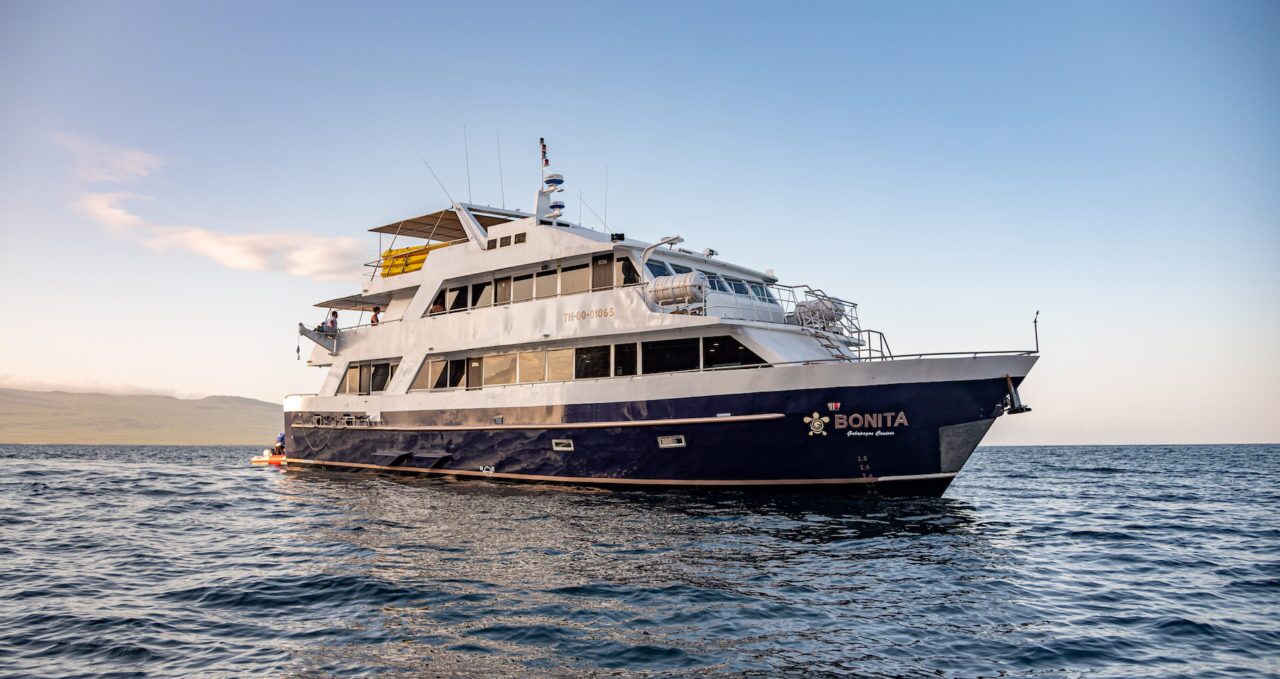
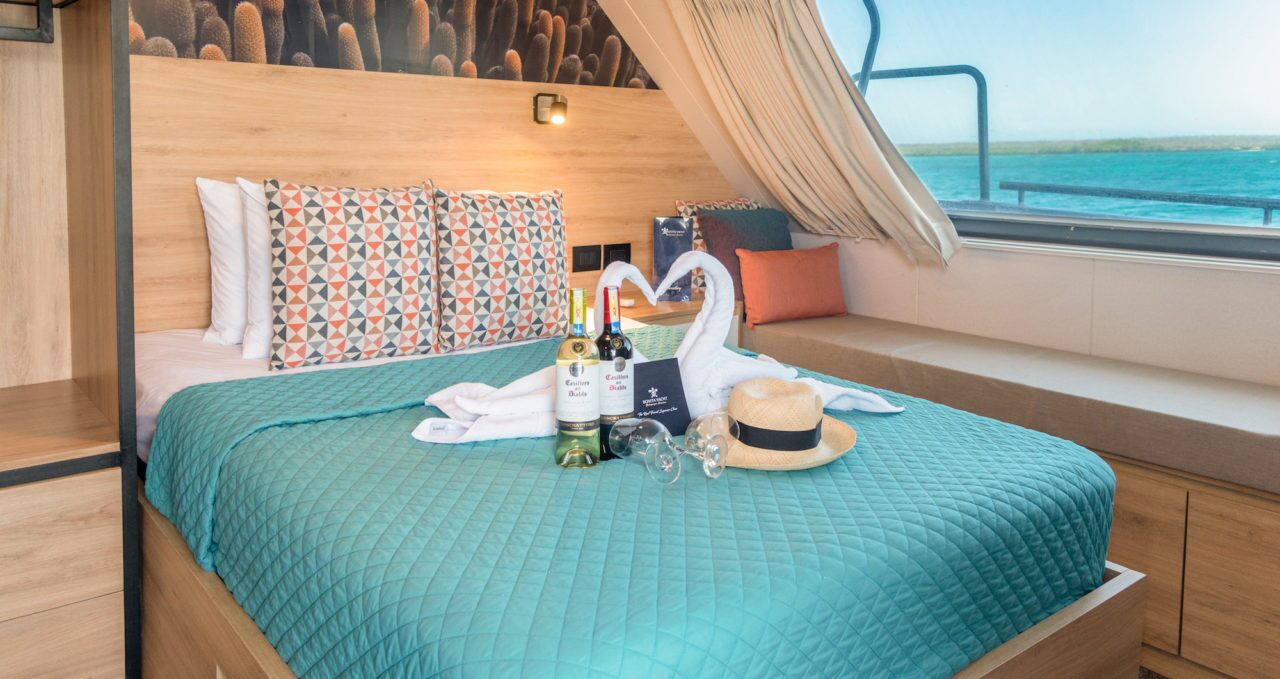
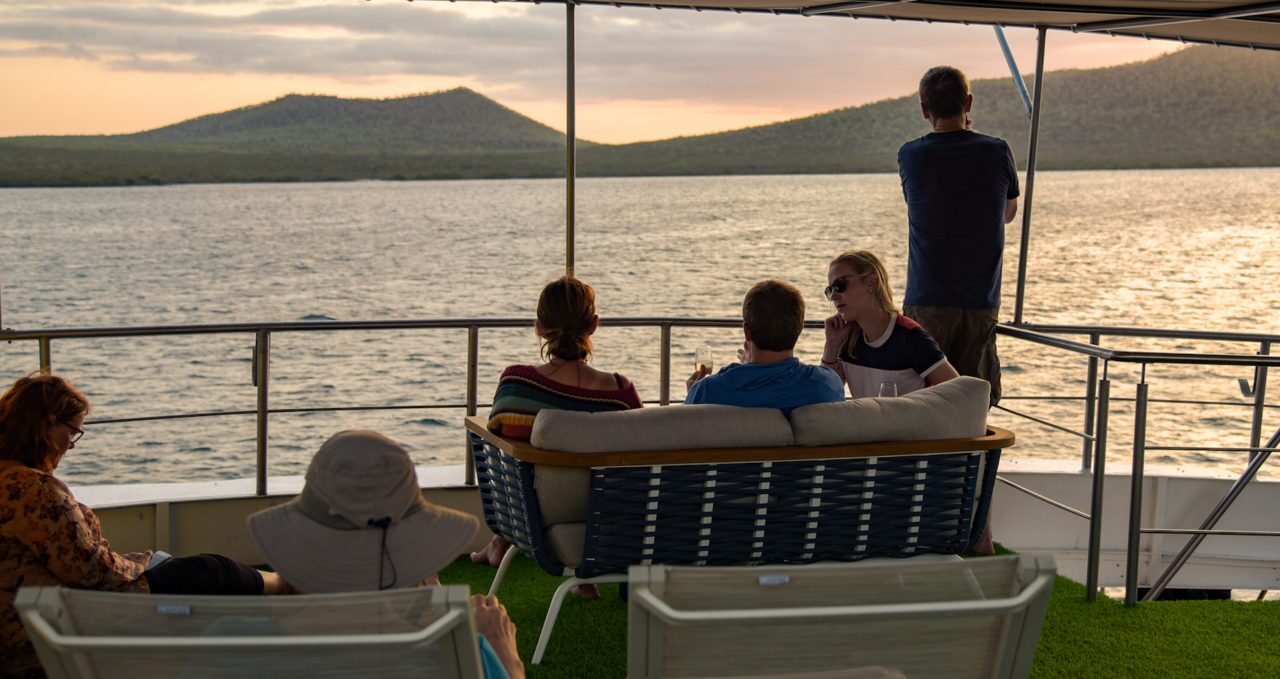
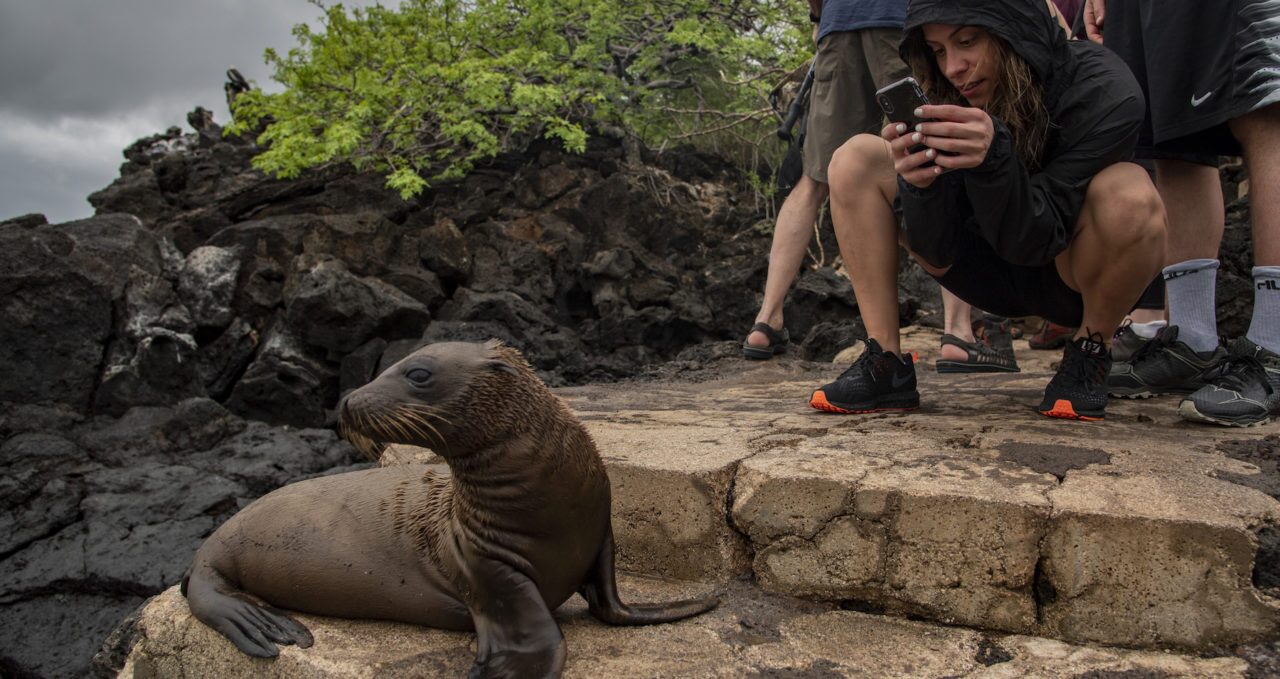
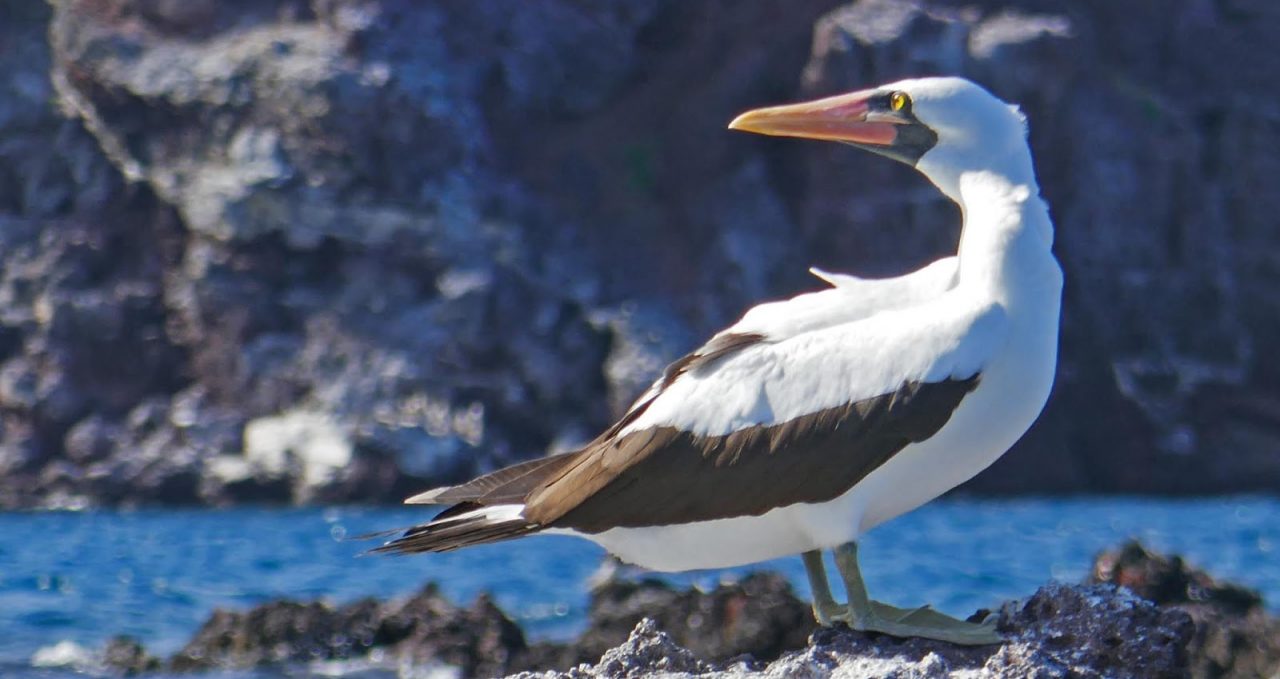
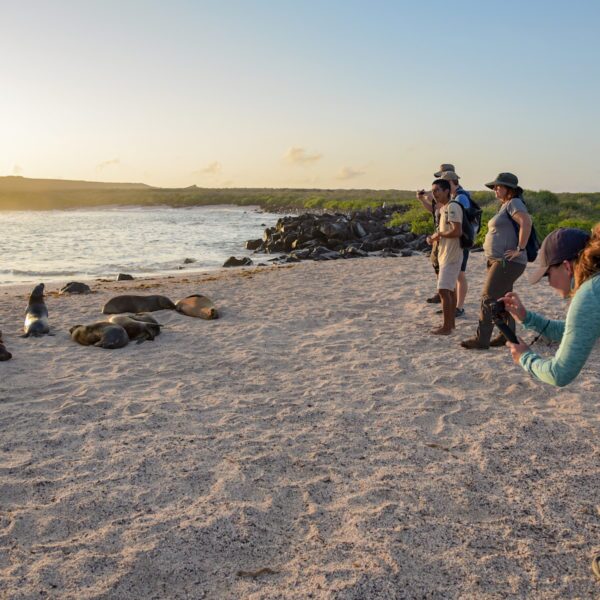
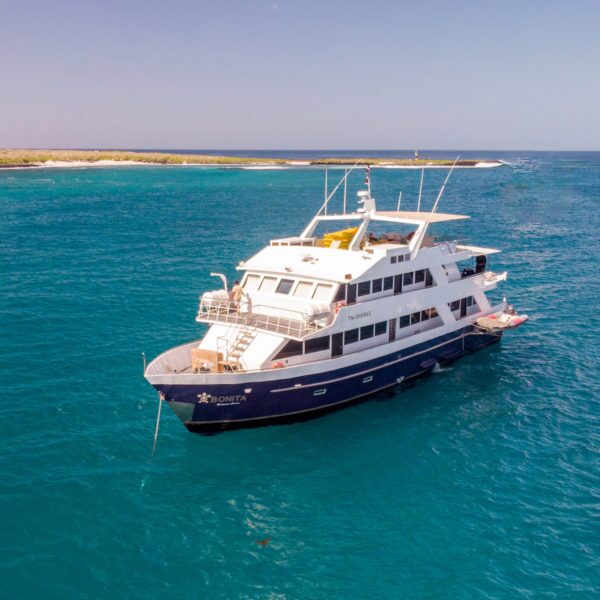
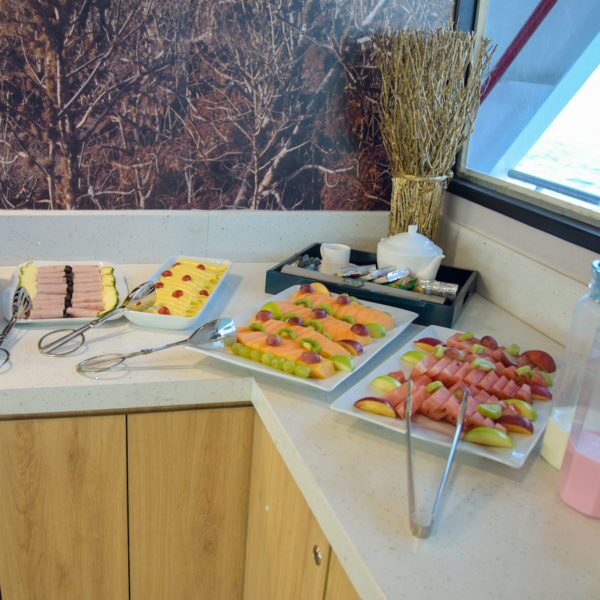
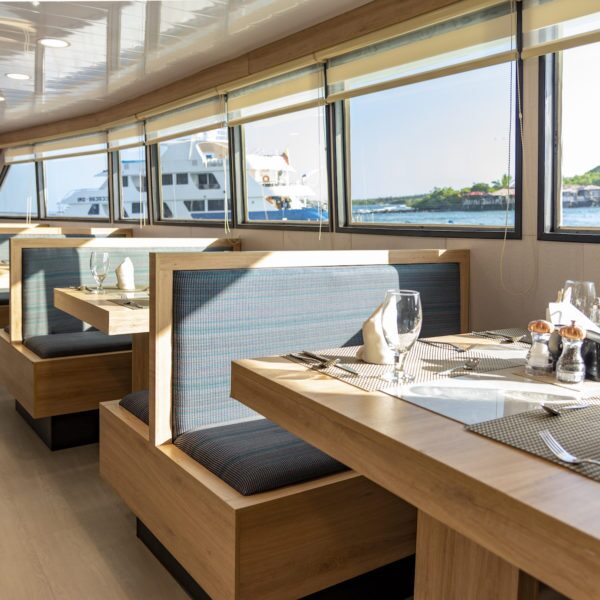
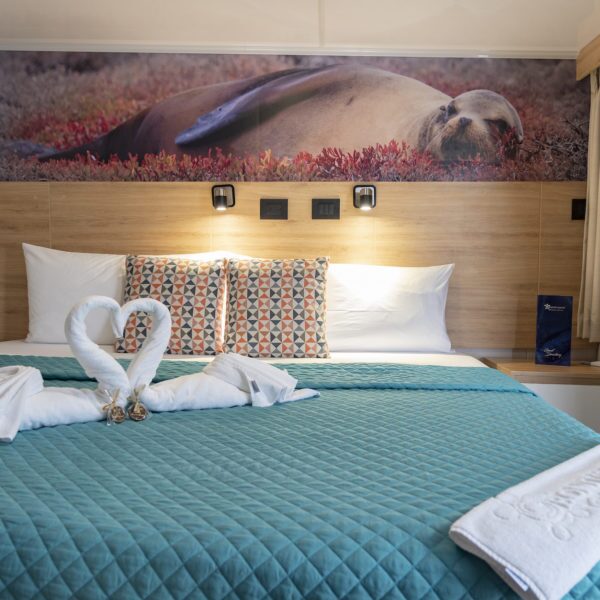
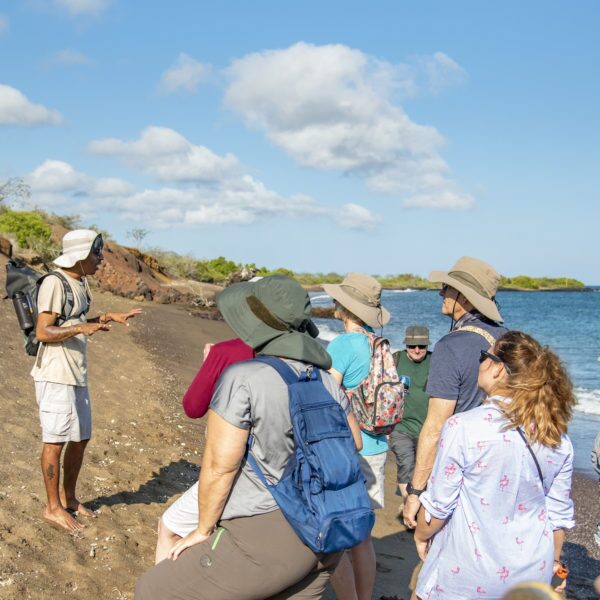
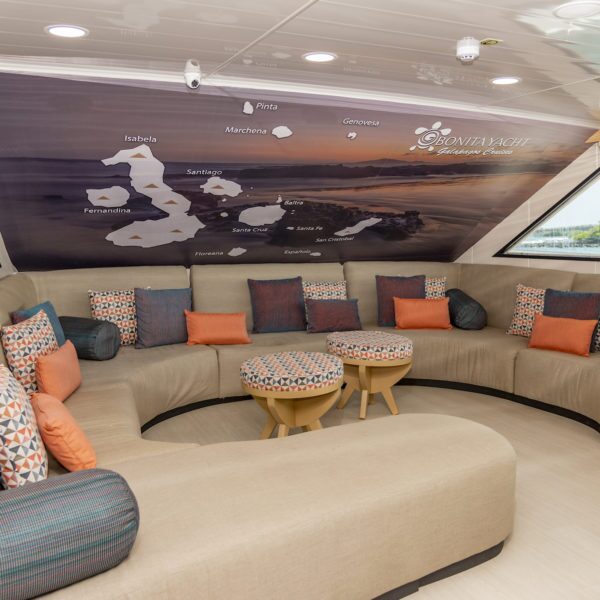
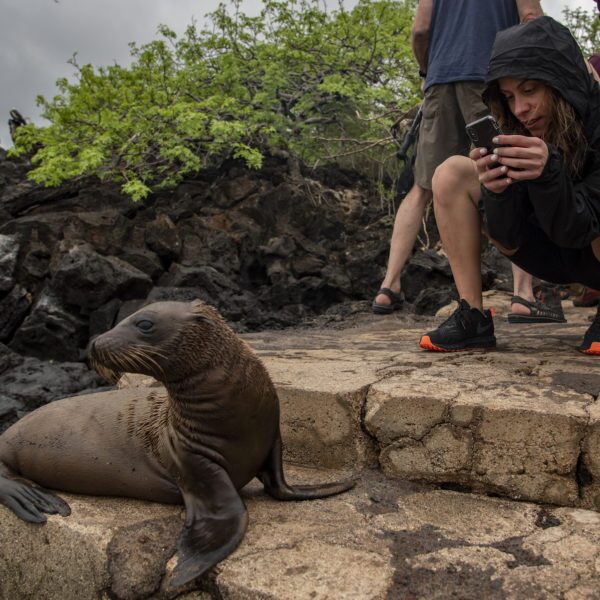
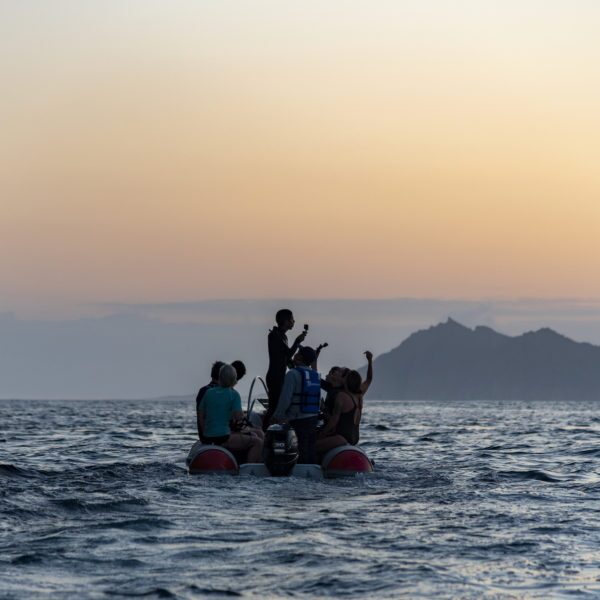
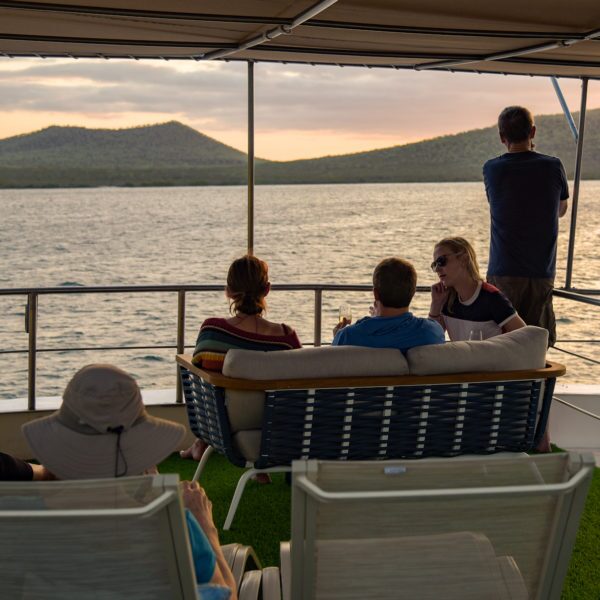
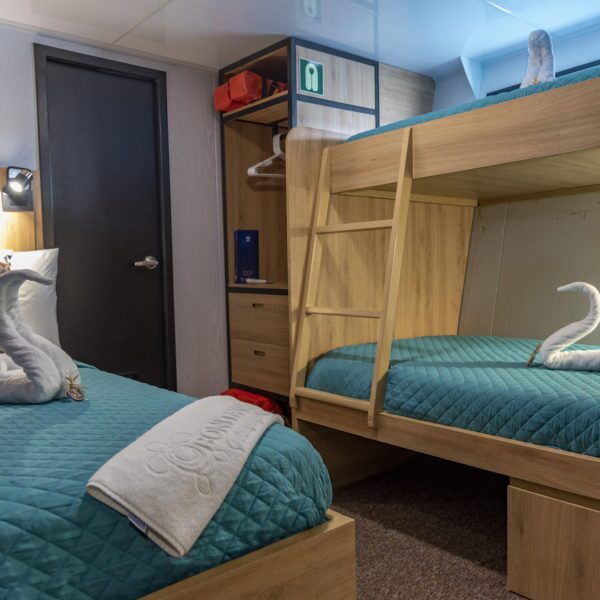
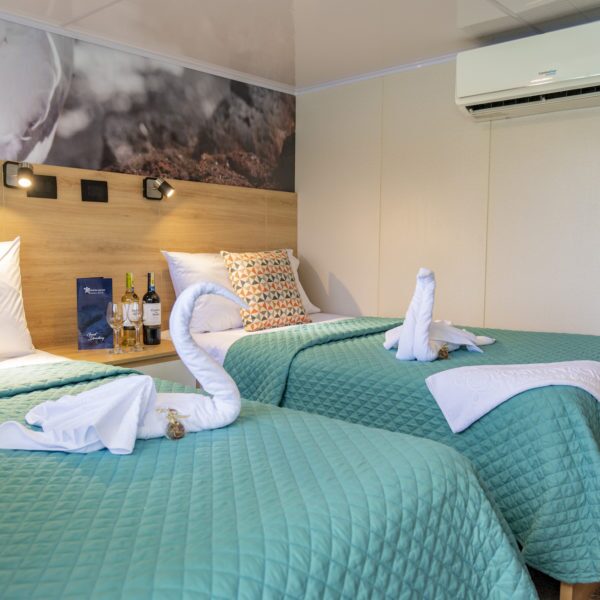
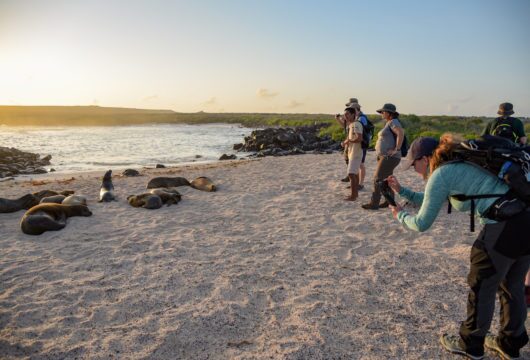
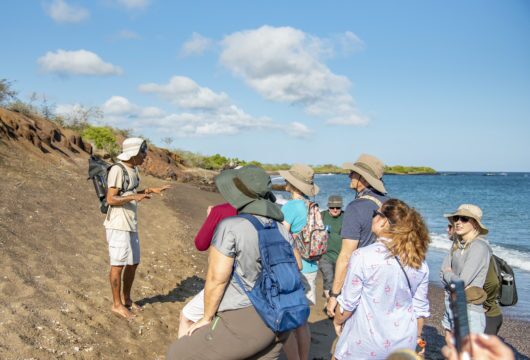
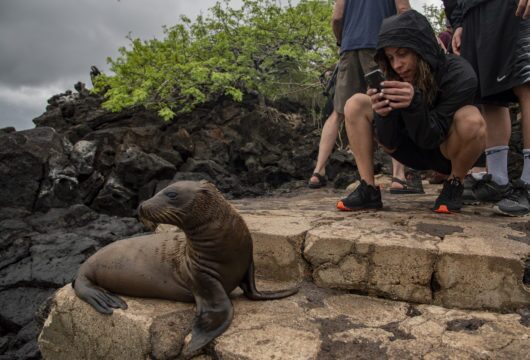
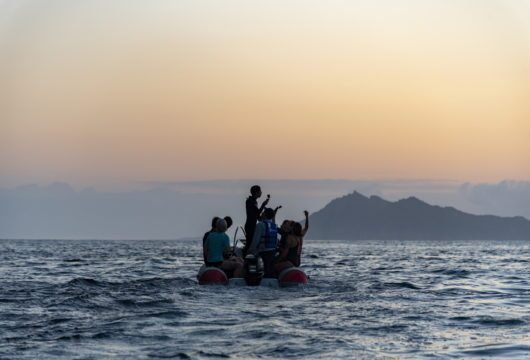
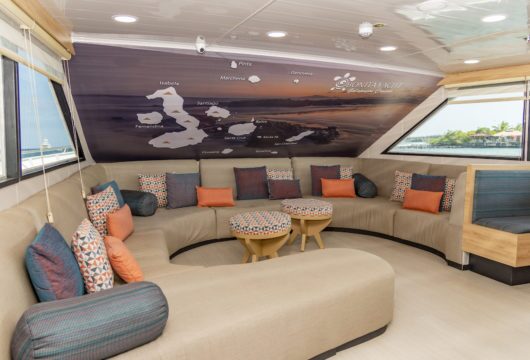
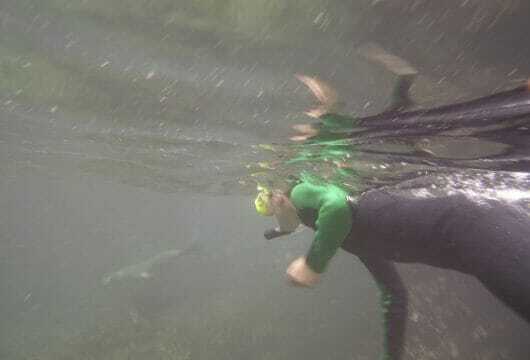
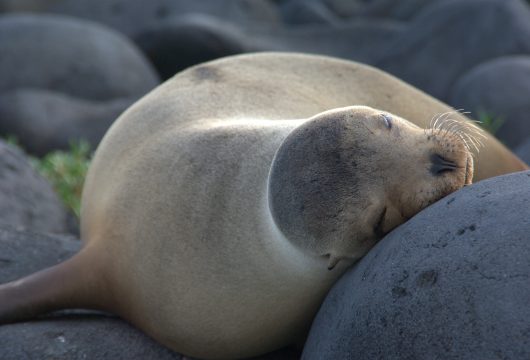
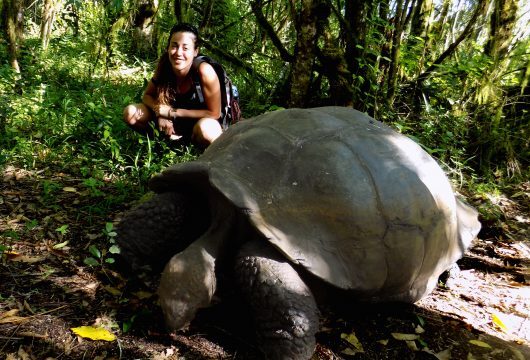
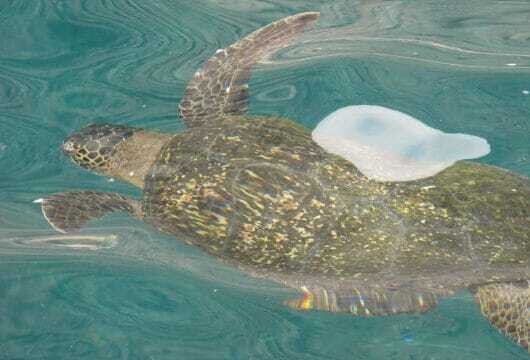
 a Group Tour
a Group Tour 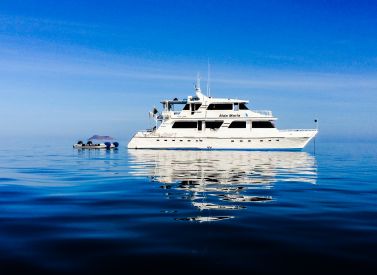
 a Tailor Made Tour
a Tailor Made Tour 